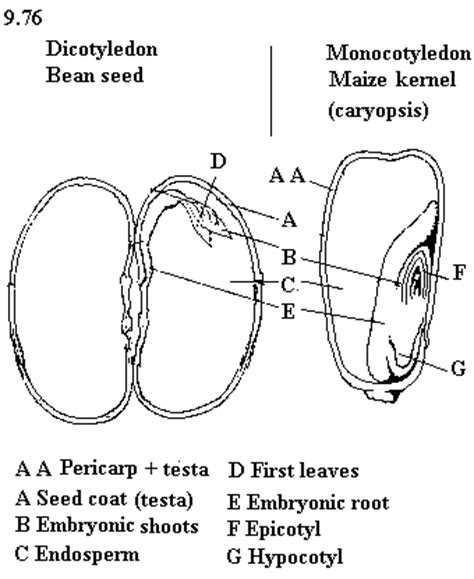The endosperm is a tissue produced inside the seeds of the flowering plants, followed by double fertilization. It is triploid in most species. It surrounds the embryo and provides nutrition in the form of starch and it can also contain oils and protein.
Some of the examples of endosperms are:
1. Coconut meat and water
2. Corn.
Some plants lack this in their seeds, such as orchids.

Index
History
Sargant, in 1900 was the first to hypothesize that double fertilization in the ancestors of angiosperms generated a second embryo, which evolved into a body with storage function.
Types of Endosperm
There are basically three types namely:
- Nuclear type
- Cellular type
- Helobial type
Nuclear Type
The primary endosperm nucleus divides by repeated mitotic free-nuclear divisions, i.e., without the formation of walls, resulting in the formation of a large number of free-nuclei in the central cell of the embryo sac.
Commonly referred to as liquid endosperm.
Example: Coconut water.
Cellular Type
Here, cell-wall formation is coincident with nuclear divisions.
Coconut meat is a cellular endosperm.
Example: Acoraceae
Helobial Type
Between the first two nuclei, a cell wall formation is seen.
One half of endosperm develops along with the cellular pattern, and the other half along with the nuclear pattern.
Ploidy of Endosperms
Ploidy is the no. of complete sets of chromosomes in a cell, i.e., the possible number of alleles for autosomal and pseudoautosomal genes.
Endosperm is a tissue produced inside most flowering plants’ seeds, followed by double fertilization. It is triploid in most species.
The formation of endosperm is from a primary endosperm nucleus (3N) by mitotic divisions. Its formation occurs before the zygotic division. The number varies in different species, from 2n to 15n.
| Species | No. of Chromosomes | Ploidy |
|---|---|---|
| Wheat | 14, 28 or 42 | 2, 4 or 6 |
| Crocodilian | 32, 34 or 42 | 2 |
| Apple | 34, 51 or 68 | 2, 3 or 4 |
| Human | 46 | 2 |
Functions of Endosperm
- It stores the food reserves and is thus important for the growth of an embryo.
- They provide protection to the developing embryo and supply nutrients.
- Endospermic tissues are claimed to regulate gene expression and seed germination
- It has a plant growth substance called cytokinin, which regulates cellular differentiation
- It may induce abortion of seeds from the genetically mismatched cross
Questions
Question 1. What is the role of cotyledons and endosperms in seed germination?
Solution. The nutrients for the developing embryo are received from the endosperms, while cotyledons provide nutrition to the young seedling.
Question 2. When does the formation of endosperm take place?
Solution. Its formation takes place when the two pollen nuclei reach the interior of a female gametophyte.
FAQs
It is a tissue which surrounds and nourishes the embryo in the seeds of angiosperms.
Ploidy is the no. of all sets of chromosomes present in a cell. The endosperm is triploid (3n) in most angiosperm plants.
It plays a vital role by supplying nutrients to the growing embryo, controlling embryo growth, and protecting the embryo by acting as a mechanical barrier during seed germination and development.
There are three types namely:
(i) Nuclear type
(ii) Cellular type and
(iii) Helobial type
Similar Articles
